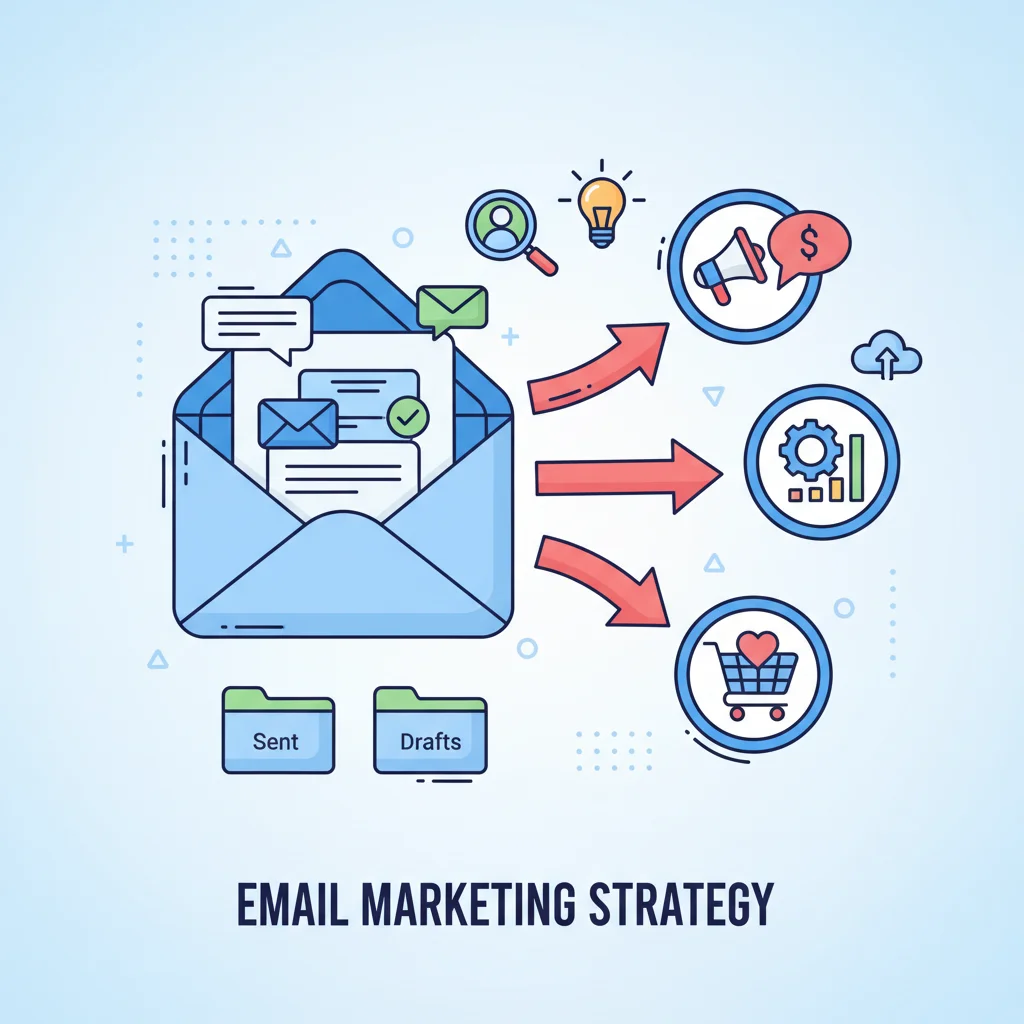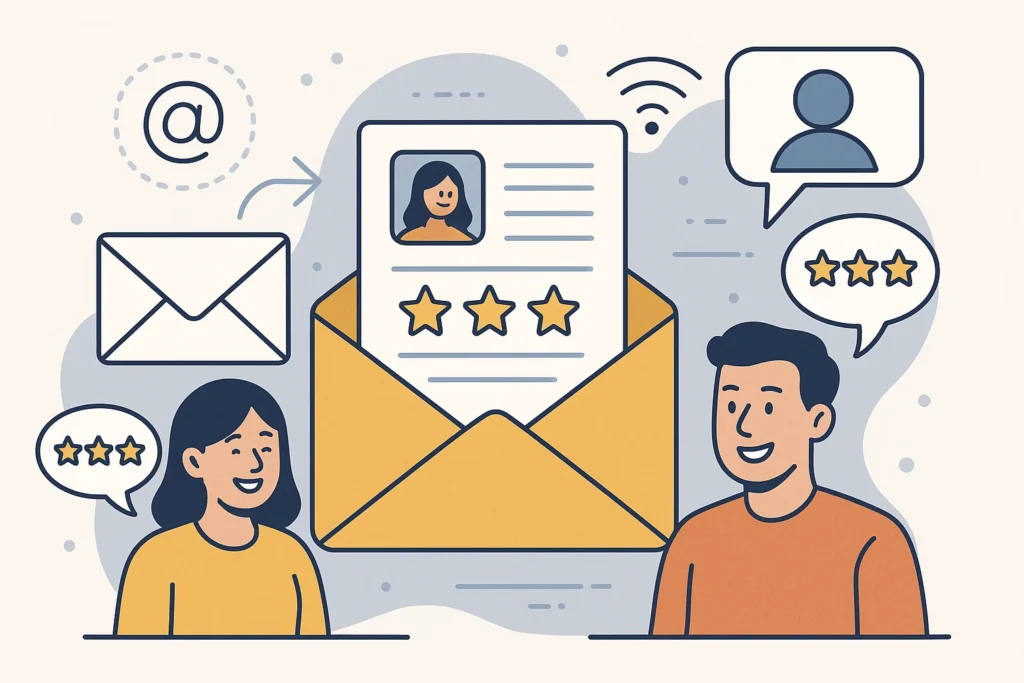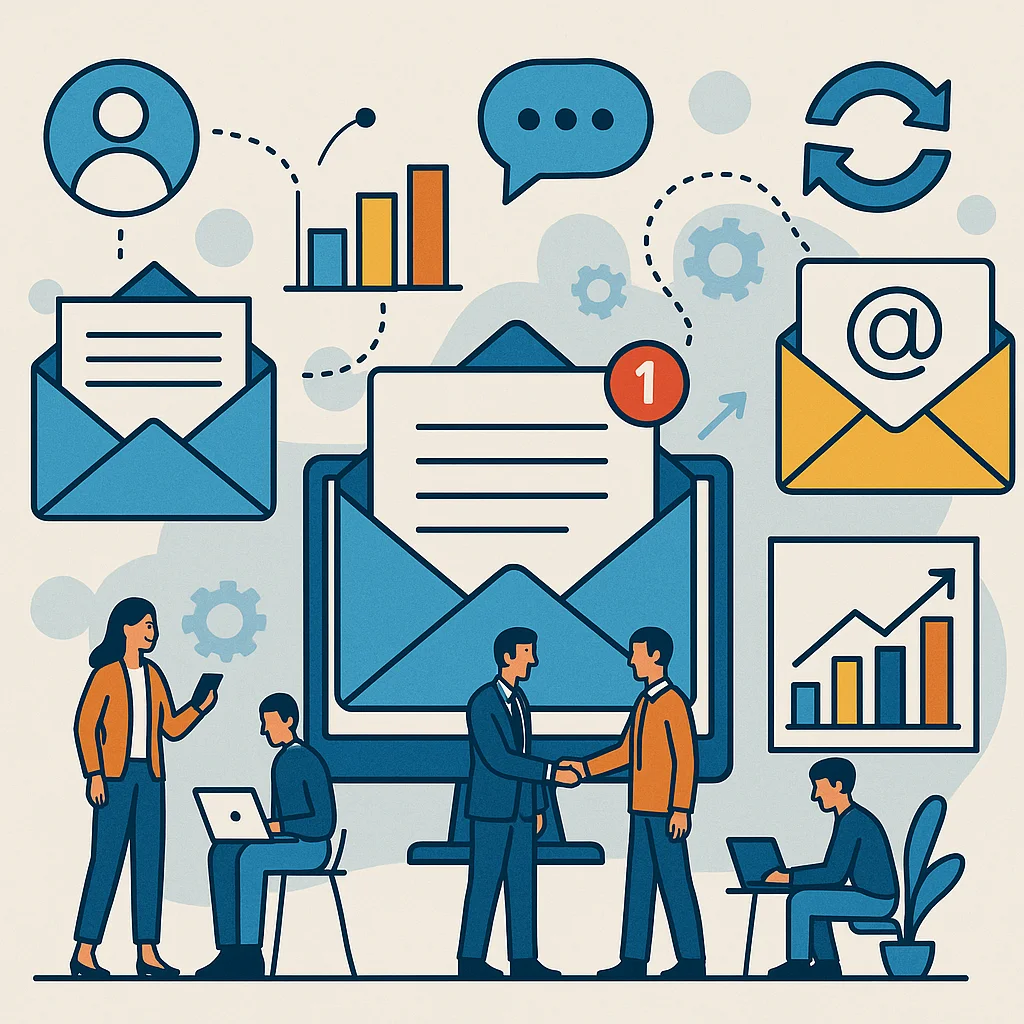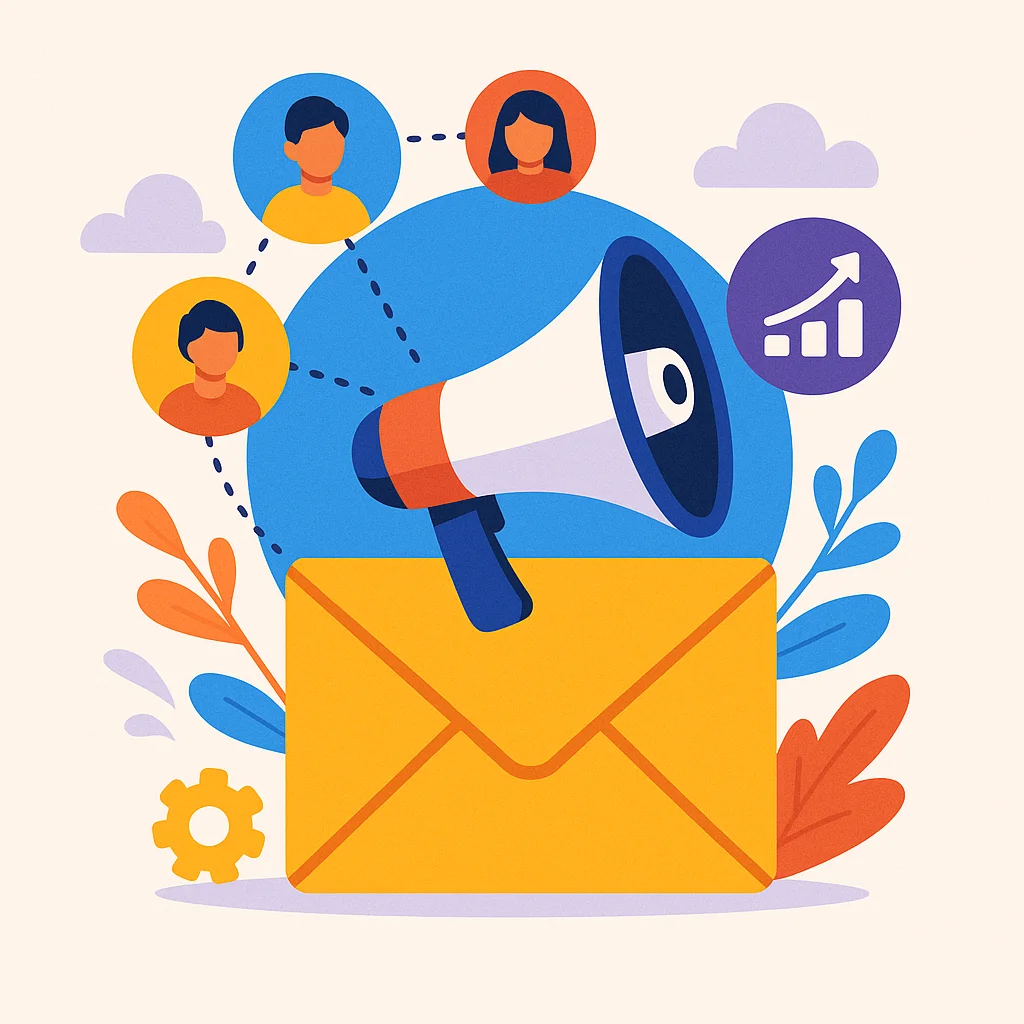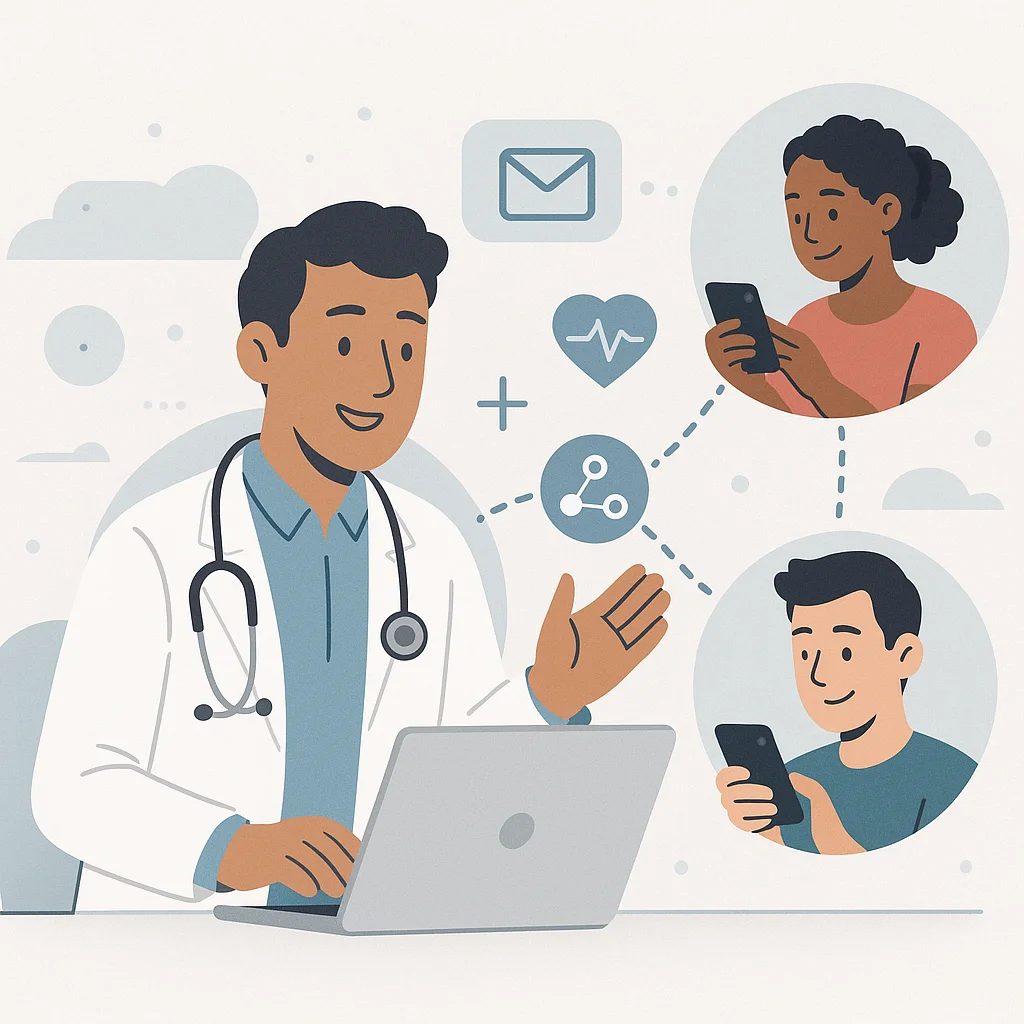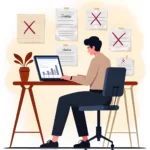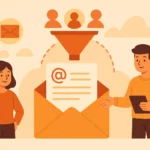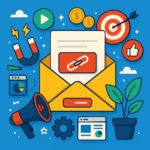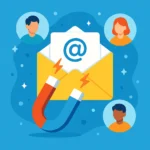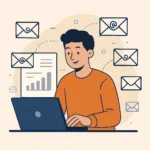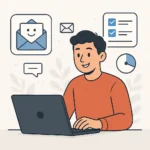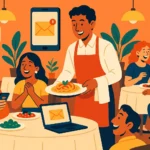Now Reading: Boost Revenue With Email Marketing For Cross-Selling and Upselling
-
01
Boost Revenue With Email Marketing For Cross-Selling and Upselling
Boost Revenue With Email Marketing For Cross-Selling and Upselling
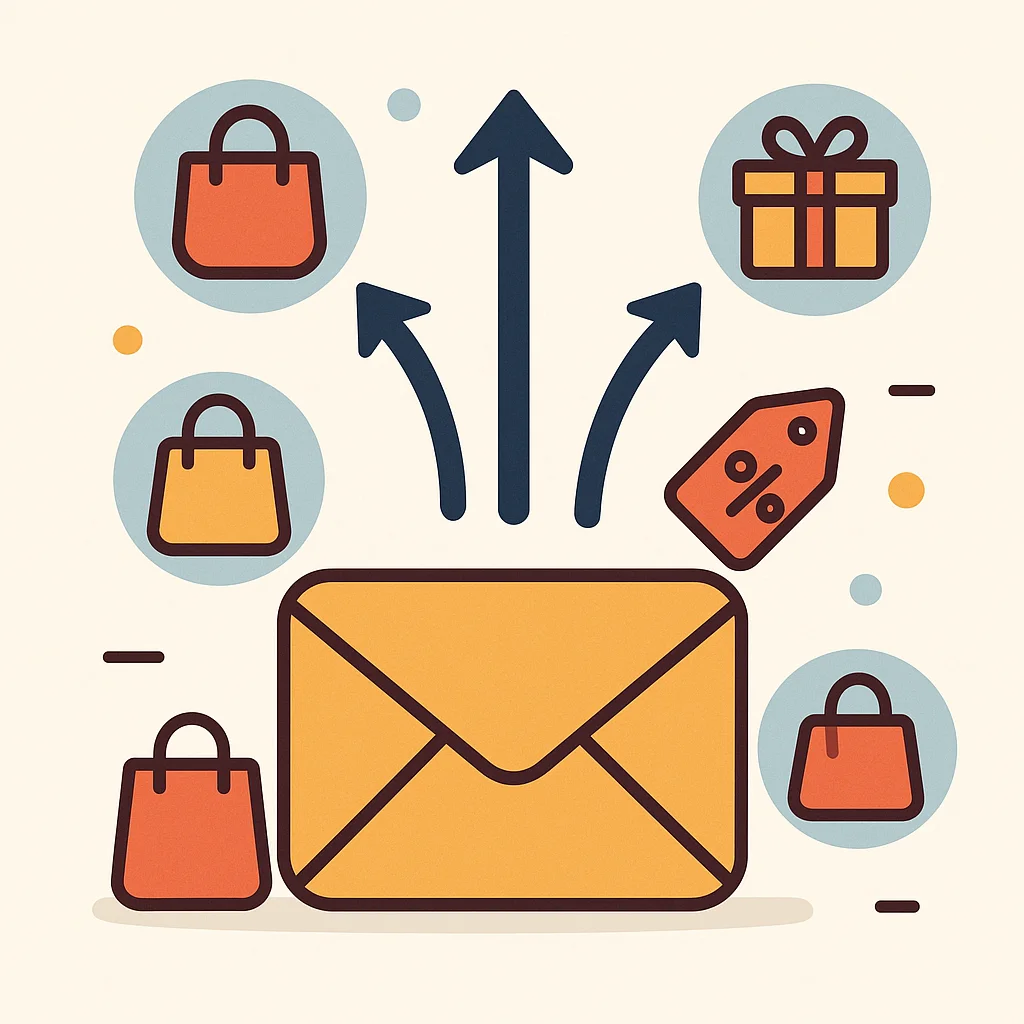
You’re leaving money on the table every single day. While you celebrate each sale, your customers are buying those complementary products from your competitors instead. They needed that laptop case, those matching accessories, that premium upgrade – but nobody told them about it. Email marketing for cross-selling and upselling fixes this problem by turning every purchase into a conversation about what else your customers actually need.
Key Takeaways
Email marketing for cross-selling and upselling involves sending targeted messages to existing customers to encourage additional purchases. Here’s what you need to know:
- Cross-selling suggests complementary products (like offering a phone case to someone who bought a smartphone)
- Upselling encourages customers to upgrade to premium versions or higher-tier products
- Timing matters – send cross-sell emails 2-3 days after purchase when the experience is fresh
- Personalization increases conversion by up to 28% when recommendations match purchase history
- Subject lines should create urgency or highlight personal benefits to improve open rates
- Email templates work best when they focus on value rather than just pushing products
- Automation workflows can trigger relevant offers based on specific customer behaviors
- Combining both strategies in single emails can maximize revenue opportunities
How Email Marketing Transforms Cross-Selling And Upselling
Let me be honest with you – email marketing for cross-selling and upselling isn’t just about sending more emails. It’s about creating a systematic approach that feels helpful rather than pushy. When done right, these campaigns can increase your average order value by 41% and boost customer lifetime value significantly.
The beauty of email marketing lies in its ability to reach customers when they’re most receptive. Unlike cold outreach, you’re communicating with people who’ve already shown trust in your brand by making a purchase. This existing relationship creates the perfect foundation for suggesting additional products or upgrades.
Understanding The Difference Between Cross-Selling And Upselling
Before diving into email strategies, let’s clarify what we’re working with:
Cross-selling involves recommending products that complement what customers have already purchased. Think of it as completing their experience. If someone buys a laptop, cross-selling would suggest a wireless mouse, laptop bag, or software.
Upselling focuses on encouraging customers to choose premium versions or upgrades. Using the same laptop example, upselling would involve suggesting a model with better specs, extended warranty, or premium support package.
Both strategies work beautifully in email because you can personalize recommendations based on actual purchase data rather than guessing what customers might want.
Useful Articles:
Crafting Irresistible Cross-Sell Email Campaigns
Cross-sell emails work best when they feel like helpful suggestions from a knowledgeable friend. The goal isn’t to overwhelm customers with options, but to present carefully curated products that genuinely enhance their original purchase.
Timing Your Cross-Sell Emails
The sweet spot for cross-sell emails is 2-3 days after the original purchase. This timing allows customers to receive and potentially use their purchase while the buying experience remains fresh in their minds. Sending too early feels pushy, while waiting too long means the moment has passed.
Essential Elements Of High-Converting Cross-Sell Emails
Subject lines should create curiosity or highlight personal benefits. Instead of generic phrases like “You might also like,” try personalized approaches like “Complete your coffee setup, [Name]” or “The perfect companion to your new camera.”
Email content should lead with the customer’s recent purchase, acknowledge their good choice, then naturally transition to complementary suggestions. Always explain how the additional products enhance their experience rather than just listing features.
Here’s a proven cross-sell email template:
Subject: Complete your [product] experience
Hi [Name],
Hope you're loving your new [product name]!
Since you chose the [specific product], I thought you'd appreciate these handpicked accessories that other customers absolutely love:
[Product 1] - [Brief benefit description]
[Product 2] - [Brief benefit description]
[Product 3] - [Brief benefit description]
As a thank you for being an awesome customer, use code COMPLETE15 for 15% off any of these items.
Happy shopping!
[Your name]Advanced Cross-Sell Email Strategies
Abandoned cart cross-selling works exceptionally well. When someone leaves items in their cart, your follow-up email can include both cart reminders and suggestions for complementary products. This approach feels helpful rather than desperate.
Post-purchase confirmation emails offer natural cross-sell opportunities. After confirming their order, include a small section showcasing related products with phrases like “Other customers also loved these items.”
Seasonal cross-selling leverages timing and relevance. If someone bought hiking boots in spring, summer emails might suggest moisture-wicking socks or portable water bottles.
Mastering Upsell Email Techniques
Upselling through email requires a different psychological approach than cross-selling. You’re not just suggesting additional items – you’re convincing customers that spending more money will provide significantly more value.
The Psychology Behind Successful Upselling
Effective upselling taps into customers’ desire for better outcomes, enhanced status, or improved convenience. The most successful upsell emails focus on long-term benefits rather than immediate features.
For example, instead of saying “Upgrade to our premium plan for more storage,” try “Never worry about running out of space again with our unlimited premium plan.”
Upsell Email Templates That Convert
Here’s my go-to upsell email template for subscription services:
Subject: Unlock your full potential with [Service]
Hi [Name],
You've been crushing it with your [current plan] subscription!
I noticed you've been [specific usage behavior], which tells me you're ready for the next level.
Our Premium plan includes:
* [Benefit 1 with emotional outcome]
* [Benefit 2 with time-saving aspect]
* [Benefit 3 with exclusive access angle]
Want to see what you're missing? Try Premium free for 30 days – no commitment required.
[Upgrade Now Button]
Cheering you on,
[Your name]For product-based businesses, this template works well:
Subject: Ready for the premium experience?
Hey [Name],
Loving your [product name]?
Based on your purchase, I think you'd be blown away by our [premium version]. Here's what makes it special:
* [Key upgrade benefit 1]
* [Key upgrade benefit 2]
* [Key upgrade benefit 3]
Plus, since you're already part of our family, I can offer you an exclusive 25% upgrade discount.
[Learn More Button]
Talk soon,
[Your name]Timing Upsell Emails For Maximum Impact
Progress-based upselling works incredibly well. When customers hit certain usage milestones or approach account limits, they’re naturally more receptive to upgrade suggestions. These moments create organic opportunities for upsell conversations.
Anniversary upselling leverages the relationship you’ve built. After customers have used your basic service for several months, they’re more likely to see value in premium features.
Feature-triggered upselling activates when customers attempt to use premium features. Instead of just blocking access, send an email explaining the benefits of upgrading and offer a trial period.
Useful Articles:
Combining Cross-Selling And Upselling In Single Campaigns
The most sophisticated email marketers don’t choose between cross-selling and upselling – they strategically combine both approaches in cohesive campaigns that maximize revenue opportunities.
Creating Hybrid Email Campaigns
Bundle-focused emails naturally incorporate both strategies. You can suggest complementary products (cross-sell) while positioning premium versions of those products (upsell) as the better choice.
Lifecycle-based campaigns evolve with customer relationships. Early emails might focus on cross-selling accessories, while later messages introduce upgrade opportunities as customers become more invested in your ecosystem.
Here’s a hybrid email template:
Subject: Maximize your [product] investment
Hi [Name],
Quick question – are you getting everything you can from your [product]?
Most customers love pairing their [product] with:
* [Accessory 1] - [benefit]
* [Accessory 2] - [benefit]
But here's what really excites me: customers who upgrade to our [premium version] get access to [exclusive benefit] that completely transforms their experience.
Want the full package? I can bundle everything together and save you 20%.
[See Bundle Options]
Best,
[Your name]Segmentation Strategies For Better Results
Purchase-based segmentation allows you to send highly relevant suggestions. Customers who bought entry-level products receive different emails than those who purchased premium items from the start.
Engagement-based segmentation helps you adjust your approach. Highly engaged customers might appreciate more frequent suggestions, while occasional buyers need gentler, more spaced-out campaigns.
Behavioral segmentation uses website activity to inform email content. If someone browsed premium products but bought basic versions, your emails can address potential objections to upgrading.
Automation Workflows That Drive Results
Manual email campaigns work, but automation workflows scale your email marketing for cross-selling and upselling efforts while maintaining personalization. These systems work 24/7 to identify opportunities and deliver relevant messages at optimal times.
Setting Up Cross-Sell Automation
Purchase-triggered workflows activate immediately after specific products are bought. Each product category can have its own automation sequence with tailored cross-sell suggestions.
Browse abandonment sequences target customers who viewed complementary products but didn’t purchase. These emails can reintroduce those items with special offers or additional information.
Reorder reminders work exceptionally well for consumable products. When customers typically need refills, automated emails can suggest trying premium versions or adding complementary items.
Upsell Automation Strategies
Usage milestone triggers identify when customers are ready for upgrades. If someone approaches their account limits or uses advanced features frequently, automation can send perfectly timed upgrade suggestions.
Subscription renewal sequences create natural upselling opportunities. As renewal dates approach, automated emails can highlight premium features and offer upgrade incentives.
Win-back campaigns can include upsell elements for inactive customers. Sometimes, premium features or exclusive access can re-engage customers who’ve drifted away.
Useful Articles:
Personalization Techniques That Increase Conversions
Generic suggestions feel like spam, but personalized recommendations feel like helpful advice. The difference lies in how well you use customer data to create relevant, timely suggestions.
Data-Driven Personalization
Purchase history analysis reveals patterns that inform future suggestions. Customers who buy organic products might appreciate premium organic options, while budget-conscious buyers respond better to value-focused bundles.
Browsing behavior tracking shows interest even when purchases don’t happen. If someone repeatedly views premium products, your emails can address potential concerns or offer trial periods.
Demographic personalization helps tailor messaging tone and product suggestions. B2B customers need different approaches than individual consumers, even for similar products.
Dynamic Content Strategies
Product recommendation engines can automatically populate emails with relevant suggestions based on real-time data. This technology ensures every recipient sees products that match their interests and behavior.
Conditional content blocks show different messages based on customer segments. Premium customers might see exclusive early access offers, while new customers receive educational content about product benefits.
Geographic personalization considers location-based factors like weather, local events, or regional preferences when suggesting products or timing campaigns.
Subject Line Strategies That Boost Open Rates
Your email marketing for cross-selling and upselling success starts with subject lines that compel people to open your messages. The best subject lines create curiosity, highlight personal benefits, or create gentle urgency without feeling pushy.
Cross-Sell Subject Line Formulas
Completion-focused lines work well: “Complete your setup” or “The missing piece for your [purchase].” These suggest that customers’ experience isn’t quite finished yet.
Curiosity-driven approaches include: “Other owners love this” or “Discovered something perfect for you.” These create intrigue without revealing everything upfront.
Benefit-focused lines highlight outcomes: “Make your even better” or “Unlock your
full potential.” These focus on improvement rather than just selling more stuff.
Upsell Subject Line Techniques
Achievement-based lines celebrate progress: “Ready for the next level?” or “You’ve earned this upgrade.” These make upgrading feel like a natural progression.
Exclusive access angles create desirability: “Premium features waiting for you” or “Your VIP upgrade is ready.” These tap into customers’ desire for special treatment.
Problem-solving approaches address limitations: “Never run out of [resource] again” or “Eliminate [frustration] forever.” These position upgrades as solutions rather than just features.
Email Design And Layout Best Practices
Beautiful emails get attention, but functional design drives action. Your email marketing for cross-selling and upselling campaigns need layouts that guide readers toward purchase decisions while maintaining your brand’s personality.
Visual Hierarchy For Sales Emails
Product images should be high-quality and show products in use rather than just isolated shots. Customers need to visualize how recommendations fit into their lives.
Clear pricing information builds trust and reduces friction. Include original prices, sale prices, and any applicable discounts prominently without hiding costs in fine print.
Strategic button placement guides action without overwhelming. Use contrasting colors for call-to-action buttons and place them logically after benefit descriptions.
Mobile Optimization Essentials
Responsive design ensures emails look great on all devices. Since many customers read emails on phones, your cross-sell and upsell suggestions need to be easily scannable on small screens.
Touch-friendly buttons make mobile purchasing simple. Buttons should be large enough to tap easily and spaced appropriately to prevent accidental clicks.
Simplified layouts work better on mobile devices. Complex multi-column designs often break on phones, so prioritize single-column layouts with clear information hierarchy.
Testing And Optimization Strategies
Successful email marketing for cross-selling and upselling requires continuous testing and refinement. What works for one audience might not work for another, and customer preferences evolve over time.
A/B Testing Essentials
Subject line testing can dramatically impact open rates. Test different approaches like curiosity vs. benefit-focused lines, or personal vs. general messaging.
Content testing reveals which product positioning resonates best. Try focusing on features vs. benefits, or emotional appeals vs. logical arguments.
Timing experiments help identify when your audience is most receptive. Test different days of the week and times of day to find optimal sending windows.
Performance Metrics That Matter
Open rates indicate subject line effectiveness and sender reputation. Low open rates suggest you need better subject lines or list hygiene.
Click-through rates measure content relevance and call-to-action effectiveness. High opens but low clicks mean your content isn’t compelling enough.
Conversion rates show actual revenue impact. This metric matters most because it directly correlates with business results.
Revenue per email provides the clearest picture of campaign success. This metric accounts for both conversion rates and average order values.
Email marketing for cross-selling and upselling transforms one-time buyers into loyal, high-value customers who genuinely appreciate your recommendations. When you focus on providing value rather than just pushing products, these campaigns become powerful tools for sustainable business growth that benefits everyone involved.


